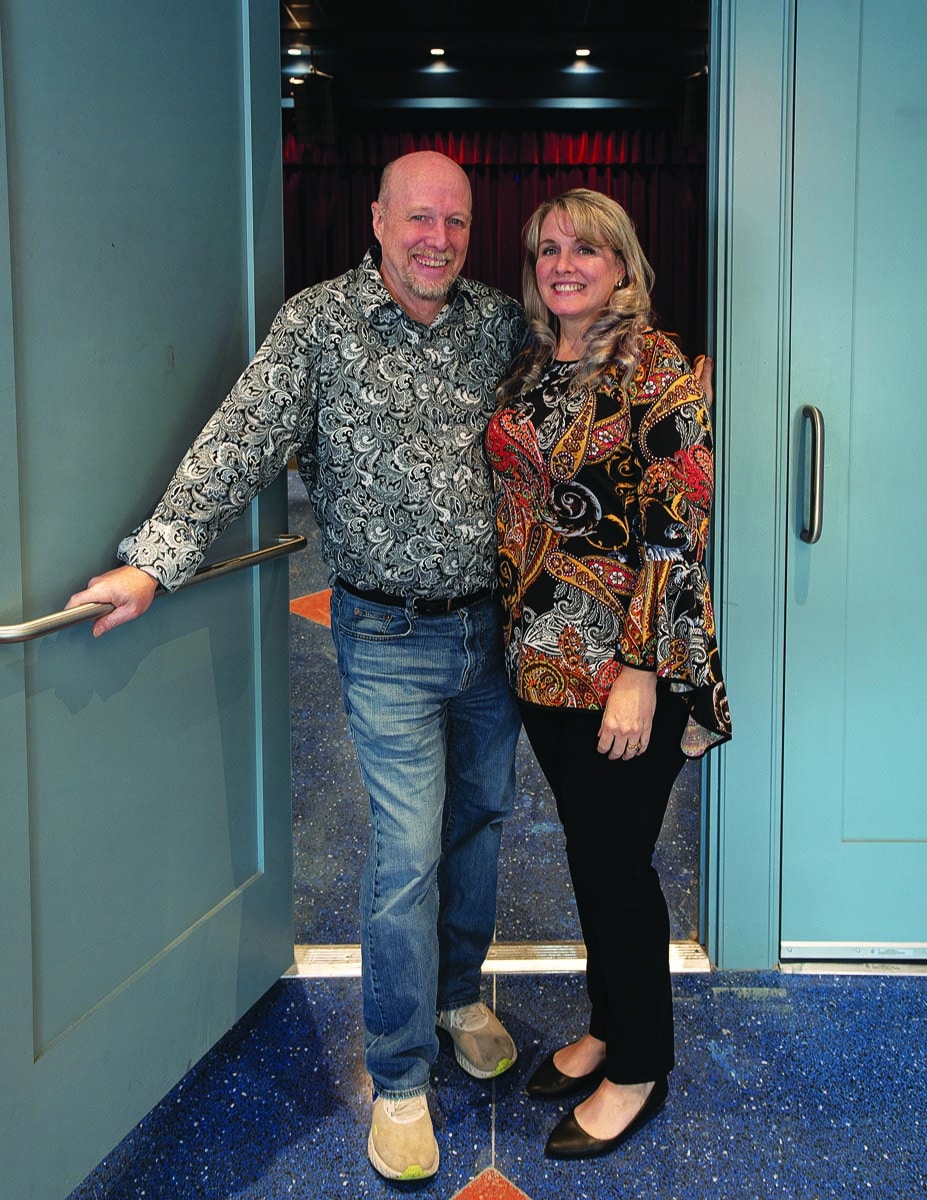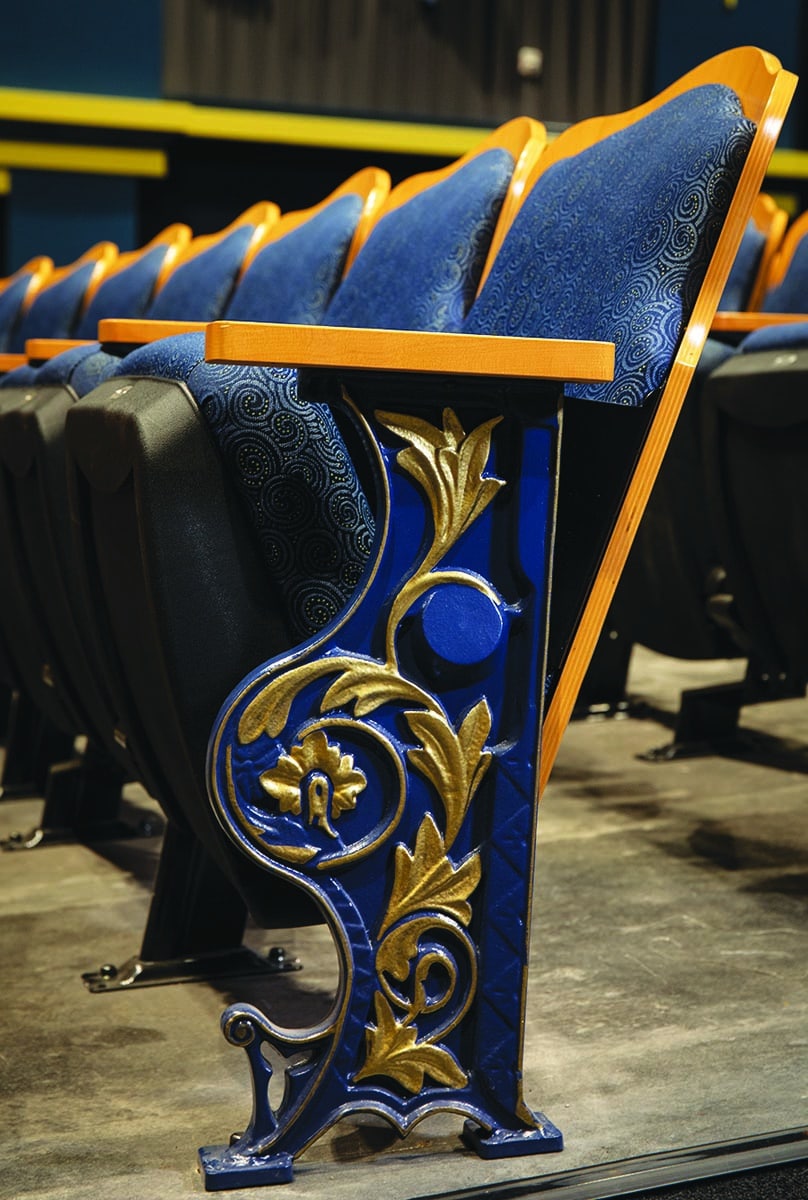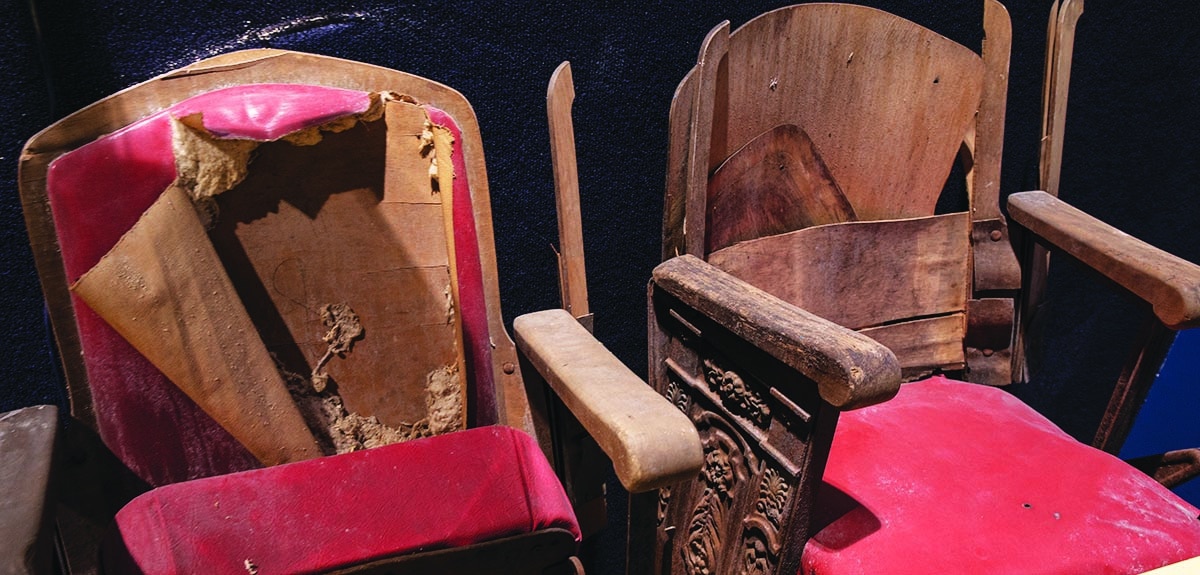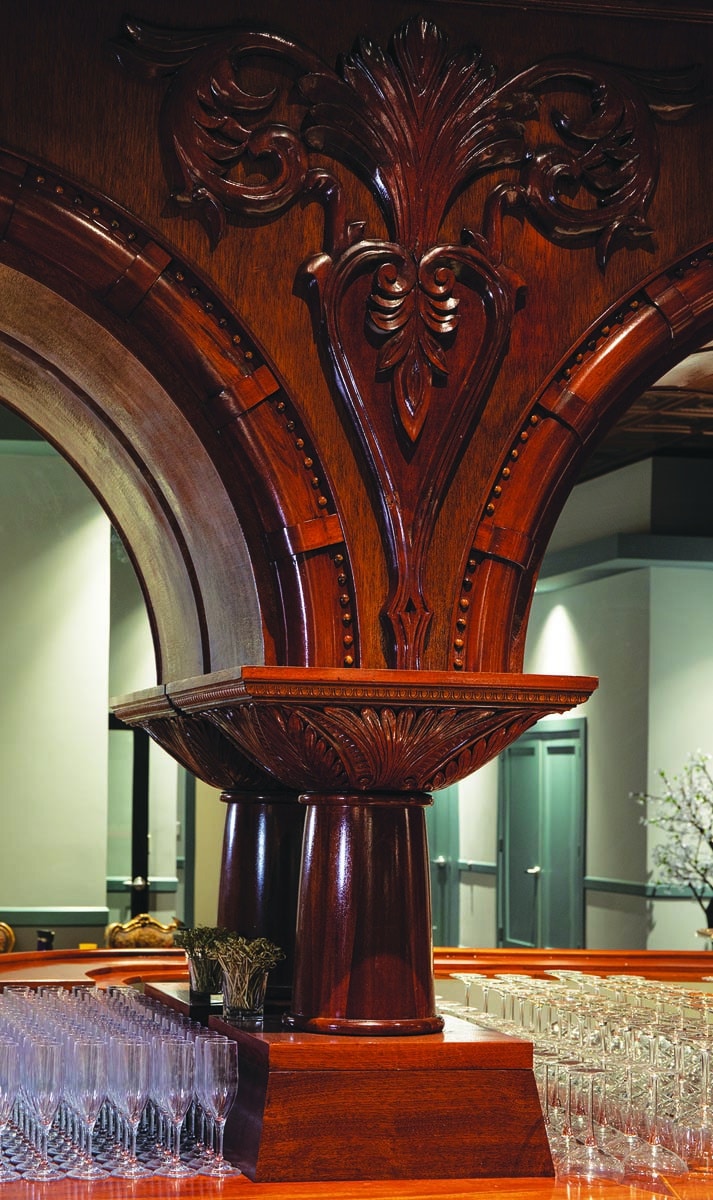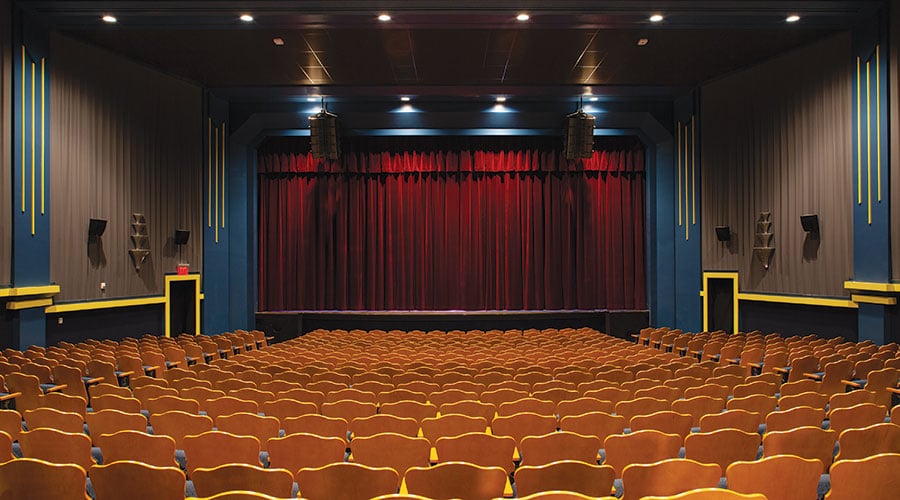
The Isis Rising from the Rubble of Neglect
By Linda Blackwell Simmons
Photos by Ralph Lauer
Fort Worth’s historic Northside is a hopping tourist spot, and North Main Street sees a lot of traffic day and night. But while many buildings in the area have enjoyed renovations and updates over the years, the New Isis Theater (its name changed from Isis to New Isis in 1936) sat somber and barren for decades, marquee lights darkened and doors boarded.
That changed this spring, thanks to the tenacious fervor of Fort Worth natives Jeffrey Smith and his wife, Debbie Garrett-Smith. Four years after the visionary owners took it over, the theater — now Downtown Cowtown at the Isis — has reopened to the public, 107 years after its first opening.
The Smiths purchased the theater in 2017. Both have backgrounds in the teaching profession — Jeffrey in theater, and Debbie in English and history — but neither had hands-on experience in construction, especially historical renovation. But Debbie says old theaters, and the New Isis in particular, have been Jeffrey’s longtime passion.
In late May and June, the marquee lights glowed and the doors opened, once again welcoming patrons with live music including a multi-night Roots of Music concert. Later in June, the Downtown Cowtown at the Isis hosted the world premiere of 12 Mighty Orphans, a made-in-Fort Worth (and Parker County) movie featuring an all-star Hollywood cast including Luke Wilson and Robert Duvall.
It has been a long four years for the Smiths, but their dream began long before they bought the New Isis.
“Every single time we drove down North Main, Jeff would say he wished someone would restore that theater,” says Debbie. “Then it became he wanted to restore it. We would laugh because educators don’t make enough money to restore an old theater. I felt like ‘Debbie downer’ for a long time.”
The building was a shell of its former self: damaged exterior walls, partially open roof and a debris-filled interior. Jeffrey saw past the crumbling movie screen and dilapidated chairs. He saw the grandeur of the past and potential for the future.
But Jeffrey agrees there were worrisome days and sleepless nights. He met with entrepreneurs who have successfully tackled renovations of other theaters, including the Franklin Theatre in Tennessee and the Paramount Theatre in Abilene. “I talked to 48 financial institutions in the beginning,” Jeffrey says. “After crossing that hurdle, next came working with the Texas Historical Commission. That took a year and a half.”
But the toughest part was the initial excavation.
“We rebuilt the structure from the ground up, making every effort to foster a sense of time and place as close to 1930s decor as possible,” Jeffrey says. Anything that held historical value was salvaged. Most of the original seats were a total loss, but a few were saved and are on display on the mezzanine level. Exact replicas of the wall sconces, which crumbled upon removal, are in place. The original octagon-shaped ticket booth, noted for its century-old black and white tile, has been refurbished and will be used as a shadow box for memorabilia.
The 500 new seats are padded with striking upholstery; the Smiths say they were fortunate to find a theater seating company that provided the curved seat-back design closely matching the original seats. Modern touches include cup holders. A new lush red velvet stage curtain opens to reveal a 37-foot retractable screen for movies; the sound system and lighting are state-of-the-art.
While not original to the Isis, both the lobby and mezzanine bars hail from the early 20th century. The upstairs bar is from a 1929 speakeasy in New Orleans, and the downstairs bar came from a 1929 North Carolina home. On a recent trip to New Orleans, the Smiths purchased the chandeliers that now hang in the upper lounge area. They also added a greenroom for their live acts.
From construction challenges to COVID to the winter storm, the delays have been many. But nothing has slowed down the energetic couple. They moved from western Tarrant County to Hurst during the theater’s opening weeks, and Jeffrey continues to work on his dissertation in learning and organizational change from Baylor University.
While the flush of early notoriety thanks to the Mighty Orphans premiere is over, bookings are in place for the rest of the year. Classic westerns run Sunday through Thursday, with both afternoon and evening showings, and live performances command weekend evenings with acts ranging from comedians to bands to theatrical performances.
In bringing the Isis back to life, the Smiths’ dream of making the theater an arts hub catering to both locals and tourists is now a reality.
The evolution of the Isis
Isis The theater holds a rich and diverse past. The name was taken from the goddess Isis from ancient Egyptian mythology, a nod to early theater production in Egypt. Opened in 1914, the building consisted of a 400-seat single-screen movie theater, a pharmacy in the front and a Western Union telegraph office in the back. It also served as a rooming house accommodating everyone from cattle drivers to well-attired businessmen. Movies were an event back in the day, with the 1914 film A Mix-Up on the Plains airing shortly after the theater opening.
New Isis After a fire in 1935, the then owners rebuilt and enlarged the theater, calling it the New Isis. It was touted as one of the largest single-screen movie theaters in Fort Worth; a live elephant was even brought in to promote one of the early movies, the 1939 musical Babes in Arms. In the late 1970s/early 1980s, as shopping malls popped up and multiscreen theaters became more prominent, most small theaters could no longer compete. The New Isis was no exception, and it closed in 1988. Single-screen theaters, once a jewel of entertainment, have been included on Historic Fort Worth’s list of endangered places for many years.
Downtown Cowtown at the Isis After four years and a multimillion-dollar investment, the historic movie theater reopened in spring 2021. For a schedule of events, films to live performances, visit the website.
2401 N. Main St., Fort Worth, 817-808-6390, downtowncowtown.com

